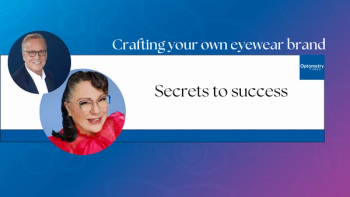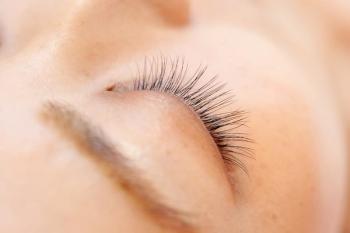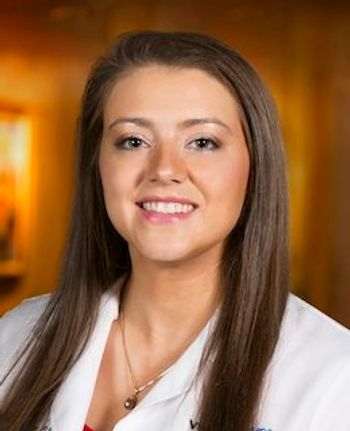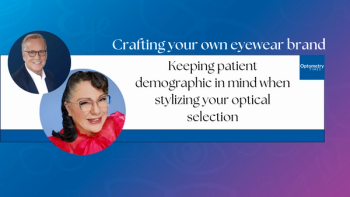
Blog: Mission trips make an impact
After 19 years of practicing optometry, it still amazes me to watch patients’ reactions when they can see for the first time.
To first witness their shock and disbelief transform into awe and wonder is truly life changing. And yet, there are more than a billion people around the globe that still need glasses but do not have access to eye care. That is one in seven people who suffer from uncorrected vision.
It is even more surprising to learn that about half of the people that need glasses can have their vision corrected with over-the-counter reading glasses. Providing eyeglasses is a simple, cost-effective solution that can impact countless lives.
Previously by Dr. Recalde:
In developing countries, it is a misconception to assume that reading glasses are not necessary if reading and computer work is not part of daily life. Reading glasses will enable people to do simple tasks such as winnowing grain, sorting rice, weeding, cooking, sewing, and creating crafts.
Reading glasses can help people earn wages, provide for their families, improve their self-esteem, and lead a productive life. It provides freedom and opportunity to become economically independent.
Unfortunately, people living near the equator are affected at a younger age and face leaving the work force earlier than expected. Countries located closer to the equator have more sun exposure and higher temperatures, which may increase the likelihood of presbyopia occurring in the people in their 30s rather than.
Consequently, reading glasses can be life changing for people in developing countries because it means they have a way to continue working and providing food for their families.
Related:
Philippines mission
I recently participated in a mission trip to the Philippines, a nation consisting of over 7,000 islands with over 170 languages and dialects.
Fortunately, we did not have too much of a language barrier because the official language of the Philippines is Tagalog and English. The poverty rate in the Philippines is about 21 percent, which translates to 22 million people barely surviving on $1.25 or less a day.
For our mission trip, we had a group of 40 people, including my husband and 8th grade twin boys, high school students and teachers, nurses, dentists, a physician, and a construction leader.
Related:
Our location for the trip was at Lipa Adventist Academy, a school with approximately 500 students from kindergarten to 12th grade. It is located 48 miles south of Manila, the capital of the Philippines.
Mission trip members leaving from Fresno, CA, to Lipa, Philippines.
We were expecting to see about 1,000 patients over a course of four-hour clinic days for six consecutive days. Since I was the only OD, I had to figure out how to see a large volume of patients and help as many people as possible in a short amount of time. I decided to focus my efforts on patients who were presbyopic and brought 1,100 reading glasses.
A majority of the glasses were purchased from Restoringvision.org, a non-profit organization that provides low-cost reading glasses and plano sunglasses for missionary trips. I also brought used glasses donated from the Lions Club that recycles prescription glasses. The Lions Club sorts the glasses by prescription and determines which glasses can be recycled for missionary trips.
Also by Dr. Recalde:
Providing patient care
With the help of high school students from Fresno, CA, and Lipa, Philippines, we were able to see approximately 150 patients per day.
I had three stations and trained high school students each morning on how to manage each station.
Station 1
The first station was the add-power station, where students had a near-visual acuity card and sample powers of reading glasses from +1.00 D to +3.50 D.
Students first assessed patients’ near vision without correction. Any patient who could not read the 20/30 line would be given reading glasses based on the age of the patient. The students adjusted the add power until the patient read the 20/30 line.
First station on the mission trip included an area for determining add power for reading glasses
Station 2
The second station was the optical station where patients chose the style of their reading glasses based on the reading power from the first station. The students helped patients choose a frame style that complimented the patient’s look and cleaned the glasses before dispensing to the patient.
The second station set up for patients allowed them to choose their own style of reading glasses based on the reading power from Station 1.
Dr. Recalde trains students on how to conduct an eye health screening.
Station 3
The last station was the eye health station. I taught students how to use a 20.00 D lens and a flashlight to conduct an eye health screening. They checked for eyelid lesions, blepharitis, pinguecula/pterygium, and advanced cataracts.
I had a laminated card for each condition to help guide students on what to look for and how to explain a condition to the patient. Any patient with eyelid lesions or cataracts were forwarded to me for further evaluation. We also dispensed plano sunglasses to patients with pterygium.
The third station allowed high school students to check patients at the eye health screening station.
At the end of the week, we were all exhausted but thankful for the experience. The students were excited about the field of optometry and wanted to continue learning about the profession. The patients were appreciative and thankful for the free glasses, and were shocked that they were free because glasses would normally cost several weeks’ worth of wages to pay off.
Most of all, this missionary trip revitalized my passion for optometry. It helped remind me of why I chose to be an OD in the first place: to transform lives through the gift of sight.
I encourage ODs to give their time to a worthwhile cause. If they can’t give their time, consider donating to Optometry Giving Sight. This organization not only delivers eye care and glasses to those in need but also provides training for local eyecare professionals and optometry schools for sustainability.
References:
1. Jacobs A. A simple way to improve a billion lives: Eyeglasses.
The New York Times. Available at: https://www.nytimes.com/2018/05/05/health/glasses-developing-world-global-health.html. Accessed 6/10/19.
2. Onesight. About us. Available at: https://onesight.org/about-us. Accessed 6/10/19.
3. Restoringvision.org. Why glasses. Available at: https://restoringvision.org/why-glasses/. Accessed 6/10/19.
4. Rahmathullah R, Barrows J, Sheffield VM. Making refractive error services sustainable: the InternationalEye Foundation model. Community Eye Health. 2007;20(63):45–46.
5. Miranda MN. The geographic factor in the onset of presbyopia. Trans Am Ophthalmol Soc. 1979;77:603–621
6. LanguageOasis Blog. Philippines-A reservoir of languages and dialects. Available at: https://www.languageoasis.com/blog/philippines-a-reservoir-of-languages-and-dialects/. Accessed 6/10/19.
7. Robison M. The extreme effects of poverty in the Philippines. Available at: https://borgenproject.org/effects-of-poverty-in-the-philippines/. Accessed 6/10/19.
Newsletter
Want more insights like this? Subscribe to Optometry Times and get clinical pearls and practice tips delivered straight to your inbox.


















































.png)


